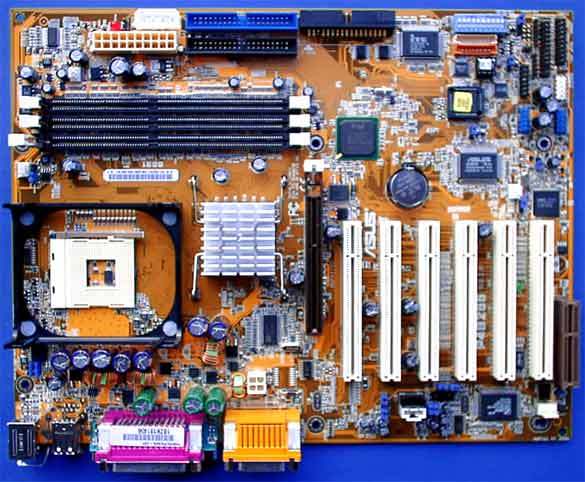Intel Goes DDR - Do We Really Care?
Conclusion: VIA P4X266A And SiS645 Are Better Solutions Than I845D
That's the Asus P4B266 with Intel's 845D chipset.
If we put the legal quarrels aside for a minute, VIA's P4X266A seems to be the best platform for Intel's Pentium 4 right now. We have to wait and see for production boards that are able to use the full potential of the SiS645 chipset that might make this legal trouble free solution just as or even more attractive. Both come with excellent memory interfaces and performance, but VIA's newcomer will also be available with USB 2.0 and ATA/133 interface very soon.
In contrast, the i850 is on a descending path. Though RDRAM still offers excellent performance for the fourth generation Pentium processor, the memory technology is comparatively expensive. Both the SiS645 and the VIA P4X266A offer pretty similar performance at lower chipset and memory costs, plus better chipset features (see comparison table above)!
Just a few words about the newcomer Intel 845D: Except for the support for DDR SDRAM, there is nothing new about it. Sure, the chipset is Intel-like: stable and reasonably fast, but it is no special offer at all, being more expensive than the products from Taiwan (SiS and VIA). In addition, it cannot outperform the P4X266A or the SiS645. Particularly the latter comes with shiny performance. Its success mainly depends on the availability of DDR333 (PC2700) memory, which is the basis for its excellent performance.
It is hard to believe, but Intel has indeed fallen behind in providing the most attractive chipsets for its own microprocessors. Back in the days of Pentium II and III this was unthinkable! Today, Intel has to depend on corporate buyers with a hefty portion of brand name awareness that don't like Lexus ... excuse me ... Taiwanese chipset makers. There are still a whole lot of them, so we need not worry about Intel.
The next thing coming will be the step to 133 MHz (533 MHz QDR) fronts side bus clock of Pentium 4. It will take a while until Intel will introduce its own south bridge with USB 2.0 support. SerialATA is still quite a bit away while VIA will very soon support ATA133.
Get Tom's Hardware's best news and in-depth reviews, straight to your inbox.
Current page: Conclusion: VIA P4X266A And SiS645 Are Better Solutions Than I845D
Prev Page Packen Von Dateien: WinACE 2.04
Patrick Schmid was the editor-in-chief for Tom's Hardware from 2005 to 2006. He wrote numerous articles on a wide range of hardware topics, including storage, CPUs, and system builds.
